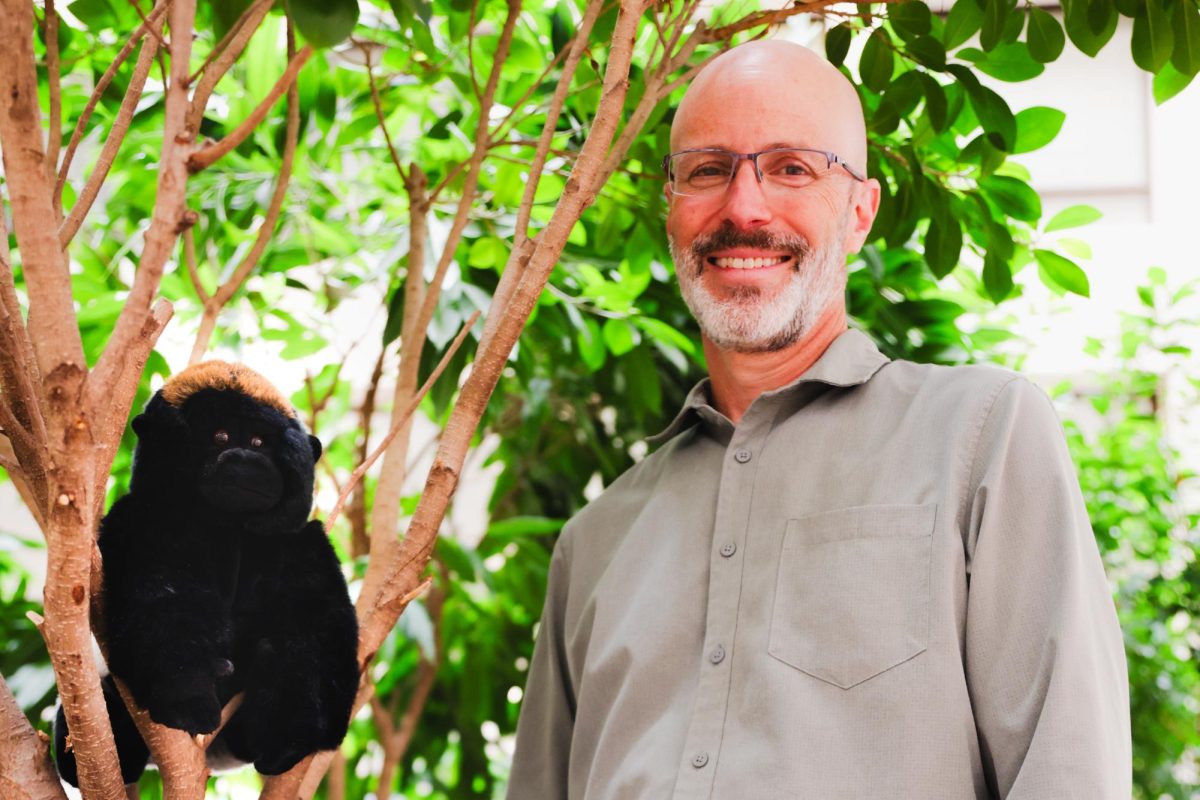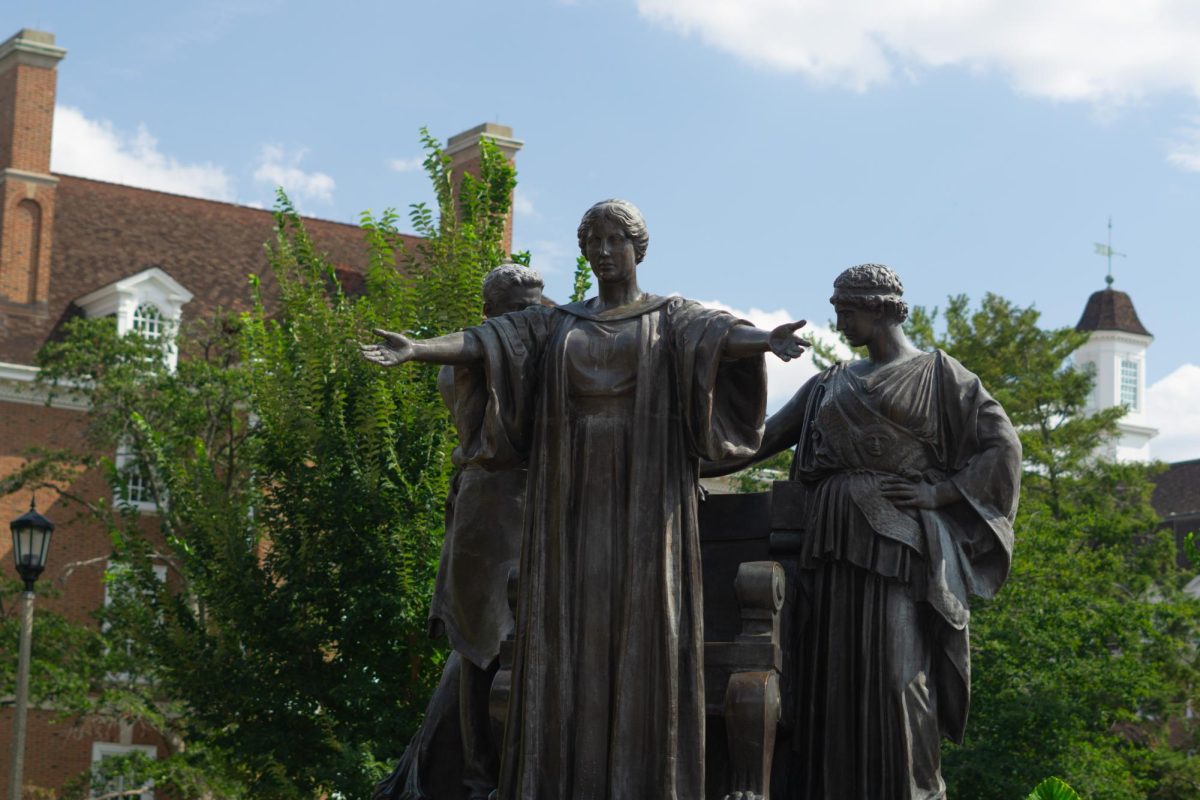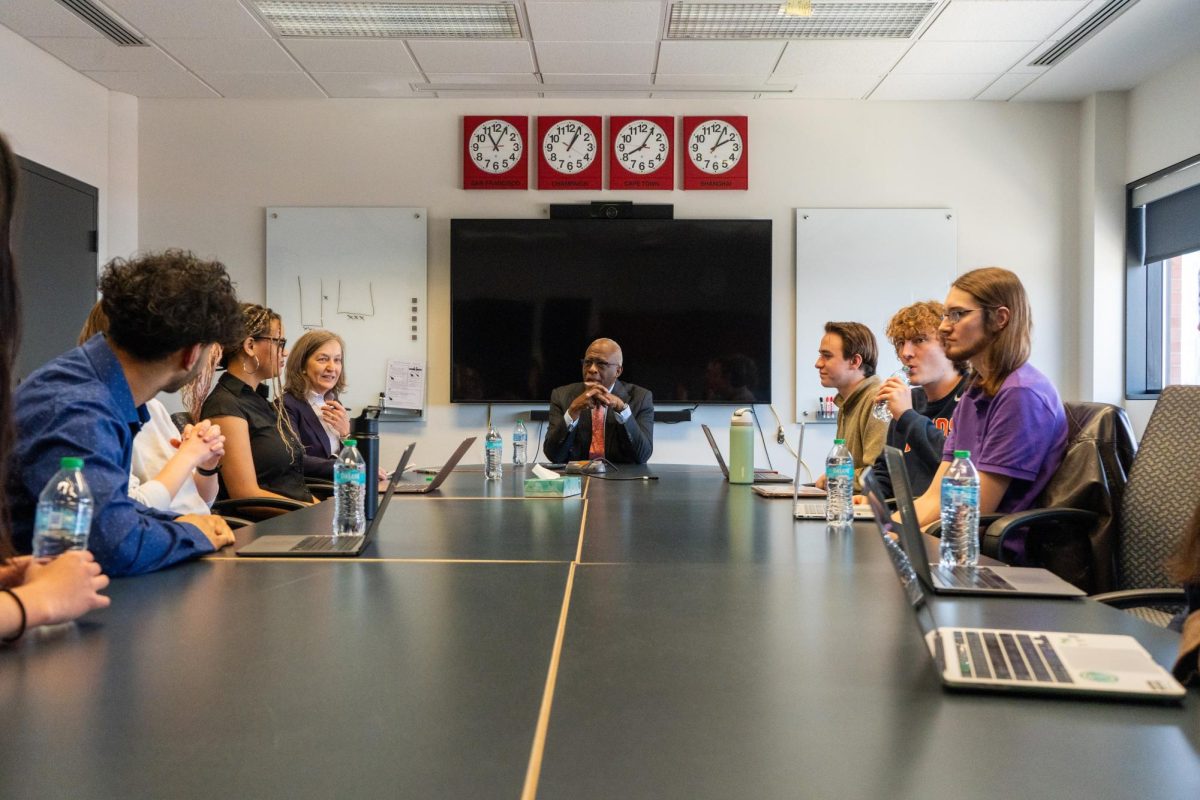Throughout Daniel Simons’ career, he has made us see the invisible — not by revealing what is hidden but by proving how little we notice.
Simons, a current University professor in LAS, is best known for co-creating a short video with a teaching fellow for a cognitive science research methods course at Harvard in 1999. They asked viewers to count basketball passes while an actor in a gorilla costume walked through the scene.
The video is commonly known as the Invisible Gorilla Theory, named after their later published book. The book discusses inattentional blindness — the idea that focusing too intensely on one task can cause someone to miss other obvious stimuli.
Simons never anticipated that a person in a gorilla suit would become a symbol of modern cognitive science or be his claim to fame. But by creating this video, he discovered a startling truth — most viewers never noticed the gorilla.
Simons utilized the animal to illustrate the limits of human perception of the world.
Get The Daily Illini in your inbox!
“We did this thinking that probably everybody’s going to notice the gorilla, so much so that it makes it hard to get past that intuition, and for me, that’s the most interesting thing about inattentional blindness,” Simons said.
Simons explained that many puzzling components of the concepts he perceived in his research and through the Invisible Gorilla Theory correlate to self-confidence.
The idea of self-confidence proved that most people believe they will “obviously” notice a change — especially one as drastic as a person in a gorilla suit.
“When we made changes, we found that so often no one would notice anything, and it became so interesting to me, it was almost serendipitous,” Simons said.
Simons’ genuine interest in his research, his time in academia and his unparalleled creativity have set both him and the Invisible Gorilla Theory apart from similar studies, such as those developed by Ulric Neisser in 1979.
“He’s willing to go beyond what a lot of other people will do in terms of creativity and humor and making the whole thing fun — he wasn’t ever self-conscious,” said Christopher Chabris, Simons’ teaching fellow and co-collaborator on much of the Invisible Gorilla Theory.
Chabris praised Simons’ teaching style, making it apparent that Simons knew how to approach his own work and his students since he began teaching.
“Even in his first or second year as a professor, he was not self-conscious or a conformist; instead, he was going with it … where most scientists only go as far as putting a funny title on an article, he was okay with running with it, using the gorilla suit and so on,” Chabris said.
The elements that others in the scientific community might have seen as obscure or humorous tactics were what propelled Simons to his recognition and success. These tactics laid the foundation for a career defined by curiosity, innovation and a commitment to understanding the human mind.
Although the Invisible Gorilla remains his most iconic contribution, it is just one component of a successful research career that has uncovered many truths about human perception.
His broader research delves into visual perception, self-confidence, memory and limits of awareness, challenging the precedent ideologies of how the mind works.
Simons has always had a commitment to education, as he discovered his passion for psychology through academia.
“I really didn’t know what I wanted to study until I took an introductory psychology class in my second term, and I really liked it,” Simons said. “Mostly, it was just taking classes across the range of psychology, not even in my focus area, and I enjoyed it enough that I ultimately decided to pursue it.”
After discovering his love of psychology during his undergraduate studies at Carleton College, Simons continued to seek higher education, earning a doctorate in experimental psychology from Cornell University.
From the beginning of his studies, Simons has remained driven by the same questions: What do humans perceive, what do they miss and why?
Simons has never strayed from his passion for understanding the human mind, as well as displaying his care for his community and students.
“I think a lot of his work is not just doing psychological research or academic research, but he really wants to make a positive impact on his own community,” said Yifan Ding, a graduate student studying under Simons.
Ding and Simons are working on a project centered around individual human perceptions and confidences while utilizing research subjects on a global scale. Ding is the only graduate student in Simons’ lab, allowing them to have a close relationship.
“Dan has taught me … that there’s more to it than just the theoretical work we do, and there’s a lot of value and importance to communicate ideas to a broader range of audiences in terms they understand — which Dan does very well,” Ding said.
Through decades of research, training and public engagement, Simons has helped reshape the understanding of the mind’s limitations — not through exposing its flaws but by better understanding its strengths.
By making the invisible visible, Simons has advanced the field of cognitive science and the idea of inattentional blindness.
“The responsibility of a scientist should be first to the truth, second to their own field of work and then only third to their own personal work, and I think Dan certainly has that,” Chabris said.












